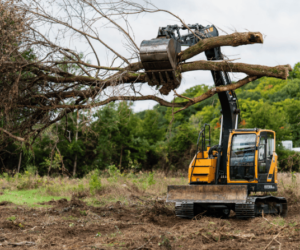How Climate Affects Your Foundation Repair: Regional Challenges
Climate plays a significant role in the health and stability of your home’s foundation. Different regions face unique challenges due to variations in weather patterns, soil composition, and seasonal changes. Understanding how climate affects foundation repair needs can help homeowners take preventive measures and protect their properties from costly damage. Let’s explore these regional challenges and how they impact foundation repair.
Hot and Dry Climates
In arid regions, such as the Southwestern United States, dry conditions can wreak havoc on a home’s foundation. The primary challenges include:
- Soil Shrinkage: Prolonged heat causes soil to dry out and shrink, leading to gaps between the soil and the foundation.
- Cracked Foundations: As the soil contracts, it can create stress on the foundation, resulting in cracks.
- Uneven Settling: Differential settling occurs when one part of the foundation sinks more than the other.
Wet and Humid Climates
In areas with high humidity and frequent rainfall, such as the Southeastern United States, excess moisture is a primary concern. Homeowners in these regions often face:
- Soil Expansion: Saturated soils, especially clay-heavy ones, expand and push against the foundation.
- Mold and Mildew: High moisture levels in basements and crawl spaces can lead to mold growth, which weakens structural components.
- Water Intrusion: Persistent water pooling near the foundation increases the risk of leaks and structural damage.
Cold Climates
In colder regions with freezing temperatures, the freeze-thaw cycle poses significant risks to foundations. Key challenges include:
- Frost Heave: As water in the soil freezes, it expands and pushes the foundation upward. When it thaws, the foundation may settle unevenly.
- Cracking from Temperature Fluctuations: Rapid freezing and thawing cycles can cause concrete to crack.
- Drainage Issues: Snowmelt can lead to water pooling around the foundation if proper drainage systems are not in place.
Homeowners in cold climates should insulate their foundations and pipes to minimize frost-related issues and ensure that drainage systems are clear of snow and debris.
Regions with Expansive Clay Soils
Expansive clay soils, found in parts of the Midwest and South, pose unique challenges due to their ability to absorb and lose large amounts of water. These soils can cause:
- Severe Shifting: Expanding and contracting clay can exert extreme pressure on the foundation.
- Frequent Repairs: Homes in these regions often require regular maintenance to address recurring issues.
Coastal Areas
Homes near the coast face specific challenges due to sandy soils, high humidity, and saltwater exposure. Common issues include:
- Soil Instability: Sandy soils lack the cohesiveness to support heavy structures effectively, leading to settling.
- Corrosion: Saltwater exposure can corrode metal components in the foundation.
- Flood Risks: Coastal homes are at higher risk for flooding, which can damage foundations and require extensive repairs.
Strategies to Address Climate-Specific Challenges
While regional climate challenges are unavoidable, there are several ways homeowners can protect their foundations:
1. Manage Water Effectively
- Install Proper Drainage Systems: Ensure gutters, downspouts, and French drains channel water away from the foundation.
- Grade Your Landscape: Slope the ground around your home to prevent water from pooling.
- Use a Sump Pump: In wet climates, a sump pump can help keep basements and crawl spaces dry.
2. Control Soil Moisture
- Soaker Hoses: Use these in dry climates to maintain consistent soil moisture levels.
- Foundation Watering Schedule: Regularly water the soil around your foundation during dry periods to prevent shrinkage.
- Mulching: Apply mulch around the perimeter of your home to retain soil moisture and regulate temperature.
3. Insulate and Protect
- Frost Protection: In cold climates, insulate the foundation and pipes to minimize frost-related issues.
- Seal Cracks Promptly: Address cracks early to prevent further damage from water or temperature fluctuations.
- Install Vapor Barriers: Use these in crawl spaces to reduce humidity and prevent mold growth.
4. Conduct Regular Inspections
- Professional Assessments: Hire a foundation specialist to perform annual inspections, especially in high-risk regions.
- Monitor Signs of Damage: Watch for cracks, sticking doors, uneven floors, and other indicators of foundation issues.
Conclusion
Climate and geography play a critical role in determining the type and frequency of foundation issues a homeowner might face. Whether it’s soil shrinkage in arid climates, frost heaves in cold regions, or water damage in humid areas, understanding these challenges is the first step toward effective prevention and repair. For homeowners in St. Louis, proactive measures are essential to safeguard against regional climate impacts. When it’s time for professional assistance, trust the experts in Foundation Repair in St Louis to provide tailored solutions that ensure the long-term stability of your home.
Also Read:














Post Comment